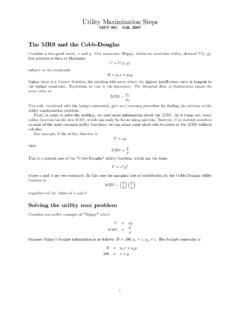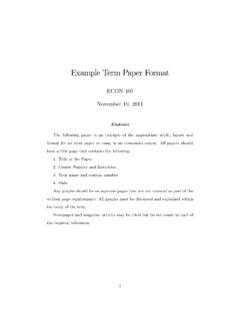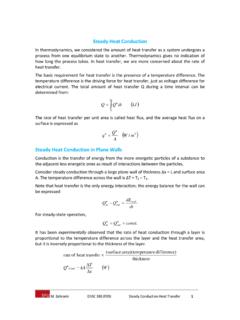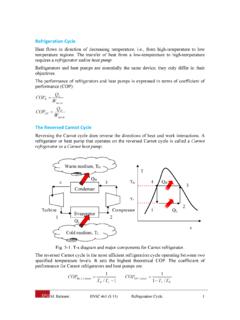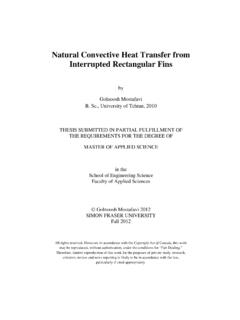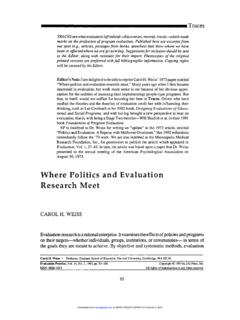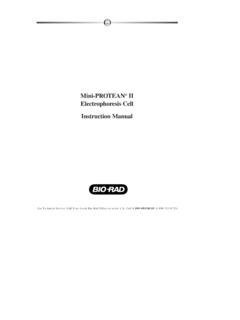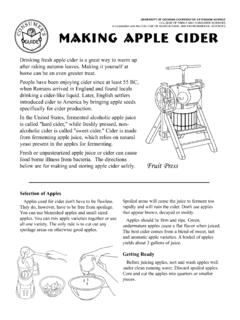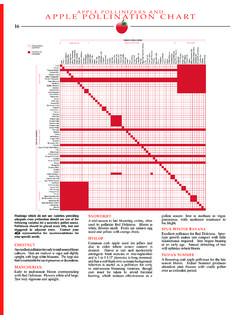Transcription of A Brief History of Mathematics - Simon Fraser University
1 A Brief History of MathematicsA Brief History of MathematicsWhat is Mathematics ? What do mathematicians do?A Brief History of MathematicsWhat is Mathematics ? What do mathematicians do? ~ Brief History of Mathematics Egypt; Positional number system, base 10 Addition, multiplication, division. Fractions. Complicated formalism; limited algebra. Only perfect squares (no irrational numbers). Area of circle; (8D/9) = Volume of pyramid. A Brief History of Mathematics Babylon; 1700 Positional number system (base 60; sexagesimal) Addition, multiplication, division. Fractions. Solved systems of equations with many unknowns No negative numbers. No geometry. Squares, cubes, square roots, cube roots Solve quadratic equations (but no quadratic formula) Uses: Building, planning, selling, astronomy (later)A Brief History of Mathematics Greece; Papyrus created!
2 Pythagoras; Mathematics as abstract concepts, properties of numbers, irrationality of 2, Pythagorean Theorem a +b =c , geometric areas Zeno paradoxes; infinite sum of numbers is finite! Constructions with ruler and compass; Squaring the circle , Doubling the cube , Trisecting the angle Plato; plane and solid geometryA Brief History of Mathematics Greece; Aristotle; Mathematics and the physical world (astronomy, geography, mechanics), mathematical formalism (definitions, axioms, proofs via construction) Euclid; Elements 13 books. Geometry, algebra, theory of numbers (prime and composite numbers, irrationals), method of exhaustion (calculus!), Euclid s Algorithm for finding greatest common divisor, proof that there are infinitely many prime numbers, Fundamental Theorem of Arithmetic(all integers can be written as a product of prime numbers) Apollonius; conic sections Archimedes; surface area and volume, centre of gravity, hydrostatics Hipparchus and Ptolemy; Trigonometry (circle has 360 , sin, cos, tan; sin + cos =1), the Almagest(astronomy; spherical trigonometry).
3 Diophantus; introduction of symbolism in algebra, solves polynomial equationsSome mathematical facts known to the ancient Greeks There are infinitely many prime numbers:(prime P: only factors of P are 1 and P)Some mathematical facts known to the ancient Greeks There are infinitely many prime numbers:(prime P: only factors of P are 1 and P) Suppose not. So there is a largest prime; P . Let M = 2 3 5 7 11 13 17 P (product of all primes)Note that none of these primes can divide M+1 (remainder is 1).But M+1 = q q q qn, product of primes, bythe Fundamental Theorem of Arithmetic. What are these primes q? So there must be more primes than the ones factoring M.
4 Some mathematical facts known to the ancient Greeks 2 is not a rational number:Some mathematical facts known to the ancient Greeks 2 is not a rational number:Suppose it was rational; then 2 = a/b, a&b can assume that a and b have no common mathematical facts known to the ancient Greeks 2 is not a rational number:Suppose it was rational; then 2 = a/b, a&b can assume that a and b have no common 2 = a /b and so a = 2b Some mathematical facts known to the ancient Greeks 2 is not a rational number:Suppose it was rational; then 2 = a/b, a&b can assume that a and b have no common 2 = a /b and so a = 2b Hence a is an even integer. But a cannot be an odd integer (because odd odd is an odd integer) and so it must be an even integer; a = 2k Some mathematical facts known to the ancient Greeks 2 is not a rational number:Suppose it was rational; then 2 = a/b, a&b can assume that a and b have no common 2 = a /b and so a = 2b Hence a is an even integer.
5 But a cannot be an odd integer (because odd odd is an odd integer) and so it must be an even integer; a = 2k And so (2k) = 2b 2k = b b is also even!But this contradictsthe assumption that a and b have no common factors. A few important problems in the development of mathematicsA few important problems in the development of mathematicsSolving polynomial equations (roots of equations)A few important problems in the development of mathematicsSolving polynomial equations (roots of equations) Linear; ax + b = 0 x = b/a (a 0)A few important problems in the development of mathematicsSolving polynomial equations (roots of equations) Quadratic; easy case ax + b = 0 x = b/aA few important problems in the development of mathematicsSolving polynomial equations (roots of equations) Quadratic; easy case ax + b = 0 x = b/ageneral case; ax + bx + c =0.
6 Complete the square; quadratic formula; formulafor the solutionKnown since ancient timesA few important problems in the development of mathematicsSolving other polynomial equations Cubic ; x + bx + cx + d = 0 Quartic; x + ax + bx + cx + d = 0 General solutions discovered around 1550;a formulathat gives you the solutionsin terms of a,b,c,d and works for all suchpolynomials using only rootsA few important problems in the development of mathematicsSolving polynomial equations Quintic; x + ax + bx + cx +dx + e = 0A few important problems in the development of mathematicsSolving polynomial equations Quintic; x + ax + bx + cx +dx + e = 0Is there a formula, with only a,b,c,d,e in it, that gives you the solutions (roots) using only square roots, cube roots, fourth and fifth roots?
7 A few important problems in the development of mathematicsSolving polynomial equations Quintic; x + ax + bx + cx +dx + e = 0 Many tries. Suspected not possible in 1700 s. A few important problems in the development of mathematicsSolving polynomial equations Quintic; x + ax + bx + cx +dx + e = 0 Many tries. Suspected not possible in 1700 s. Liouville announces some reasons why; few important problems in the development of mathematicsSolving polynomial equations Quintic; x + ax + bx + cx +dx + e = 0 Many tries. Suspected not possible in 1700 s. Liouville announces some reasons why; problem around same time ushers in new ideas into algebra; Galois TheoryNow we know whyfor quintic (and higher) polynomials there is no formula for the roots and that works for allpolynomialsA few important problems in the development of mathematicsThe development of calculus(1600 s)A few important problems in the development of mathematicsThe development of calculus(1600 s)Motivated by 4 problems;1.
8 Instantaneous velocity of accelerating object2. Slope of a curve (slope of tangent line)3. Maximum and minimum of functions4. Length of (non straight) curves ( , circumference of an ellipse? A few important problems in the development of mathematicsThe development of calculus(1600 s)Motivated by 4 problems;1. Instantaneous velocity of accelerating object2. Slope of a curve (slope of tangent line)3. Maximum and minimum of functions4. Length of (non straight) curves ( , circumference of an ellipse? )A few important problems in the development of mathematicsThe development of calculus1600 sUsing calculus, Newton explained (in the Principia); why tides occur why the shapes of planetary orbits are conic sections (ellipses, parabolas, and hyperbolas) Kepler s 3 Laws of planetary motion shape of a rotating body of fluid etc, etc, etcA few important problems in the development of mathematicsThe development of calculus1600 sUsing calculus, Newton explained (in the Principia).)
9 Why tides occur why the shapes of planetary orbits are conic sections (ellipses, parabolas, and hyperbolas) Kepler s 3 Laws of planetary motion shape of a rotating body of fluid etc, etc, etc and then ..A few important problems in the development of mathematicsThe development of calculus1600 sThe discovery of Neptune on paper! (1846)(Celestial Mechanics)(Uranus accidentally discovered by telescope; William Herschel 1781)A few important problems in the development of mathematicsThe notion of infinity20thCentury A few important problems in the development of mathematicsThe notion of infinity20thCentury Aleph Georg Cantor; mathematician 1845 - 1918A few important problems in the development of mathematicsThe notion of infinity20thCentury How many integers are there?
10 = {1,2,3,..} The usual infinity is the whole set of natural numbers (counting numbers) . A few important problems in the development of mathematicsThe notion of infinity20thCentury How many integers are there? = {1,2,3,..} The usual infinity is the whole set of natural numbers (counting numbers) . Remarkably, this is the same size as allthe integers (positive and negative), and the same size as all the rational numbers! How do we count? How do we count? By labeling the objects with counting numbers! How do we count?apples How do we count?19natural How do we count?19natural How do we count?19natural How do we count?19natural How do we count?
